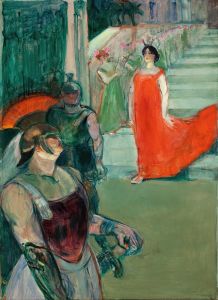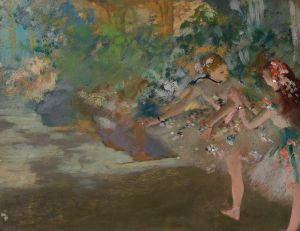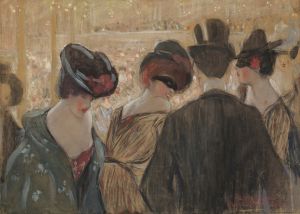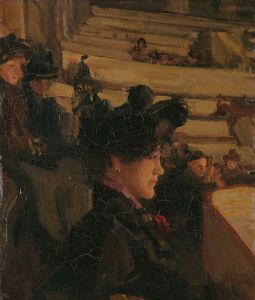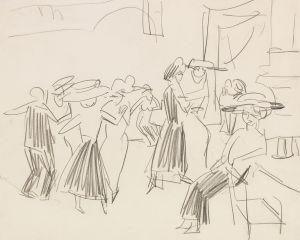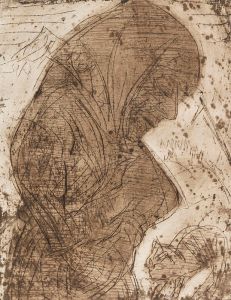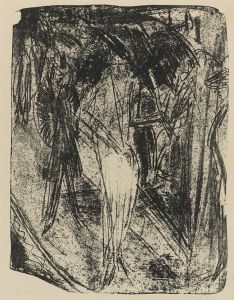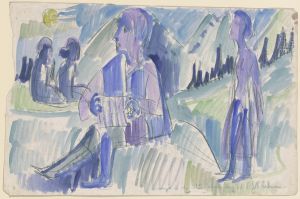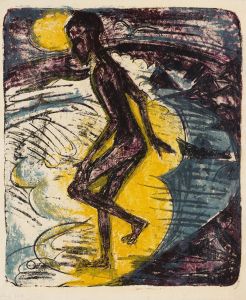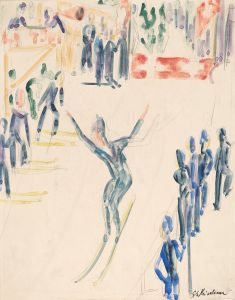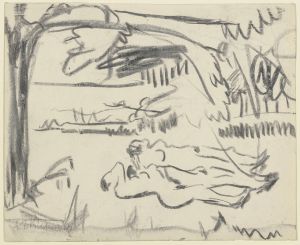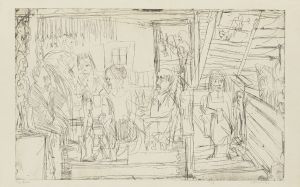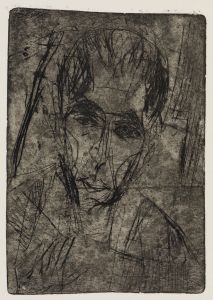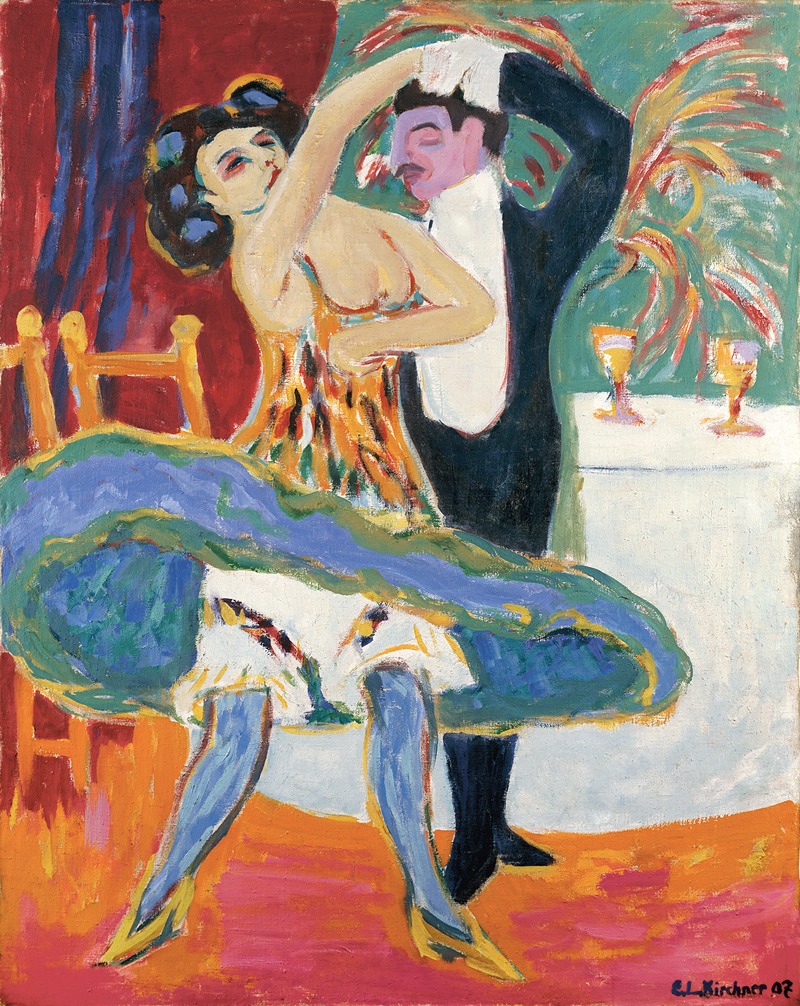
Vaudeville Theater
A hand-painted replica of Ernst Ludwig Kirchner’s masterpiece Vaudeville Theater, meticulously crafted by professional artists to capture the true essence of the original. Each piece is created with museum-quality canvas and rare mineral pigments, carefully painted by experienced artists with delicate brushstrokes and rich, layered colors to perfectly recreate the texture of the original artwork. Unlike machine-printed reproductions, this hand-painted version brings the painting to life, infused with the artist’s emotions and skill in every stroke. Whether for personal collection or home decoration, it instantly elevates the artistic atmosphere of any space.
"Vaudeville Theater" is a painting by the German expressionist artist Ernst Ludwig Kirchner, created in 1912. Kirchner was a founding member of the influential artist group Die Brücke (The Bridge), which played a crucial role in the development of Expressionism in early 20th-century Germany. The group sought to create a new form of artistic expression that bridged traditional academic art and modernist experimentation.
Kirchner's "Vaudeville Theater" captures the vibrant and dynamic atmosphere of a vaudeville performance, a popular form of entertainment during the late 19th and early 20th centuries. Vaudeville shows typically featured a variety of acts, including musicians, dancers, comedians, and acrobats, appealing to a broad audience with their eclectic mix of performances.
In this painting, Kirchner employs his characteristic bold, angular lines and vivid colors to convey the energy and movement of the scene. The composition is crowded with figures, both performers and audience members, creating a sense of bustling activity. The exaggerated forms and distorted perspectives are typical of Kirchner's style, reflecting his interest in capturing the emotional intensity and raw vitality of modern urban life.
The use of color in "Vaudeville Theater" is particularly striking. Kirchner employs a palette of bright, contrasting hues to enhance the sense of excitement and spectacle. The figures are rendered in a somewhat abstract manner, with simplified shapes and exaggerated features, emphasizing the expressive potential of color and form over realistic representation.
Kirchner's interest in vaudeville and other forms of popular entertainment was part of a broader fascination with the cultural life of the city. Like many of his contemporaries, he was drawn to the energy and diversity of urban environments, which he saw as a source of artistic inspiration. His depictions of vaudeville performances, cabarets, and street scenes reflect his desire to capture the spirit of modernity and the complexities of contemporary life.
"Vaudeville Theater" is an important example of Kirchner's work during this period, showcasing his innovative approach to composition, color, and form. It also provides insight into the cultural milieu of early 20th-century Germany, highlighting the ways in which artists engaged with and responded to the rapidly changing social and cultural landscape.
Today, Kirchner is recognized as one of the leading figures of German Expressionism, and his works are held in major museums and collections around the world. "Vaudeville Theater" remains a testament to his artistic vision and his ability to capture the dynamism and excitement of modern urban life.





